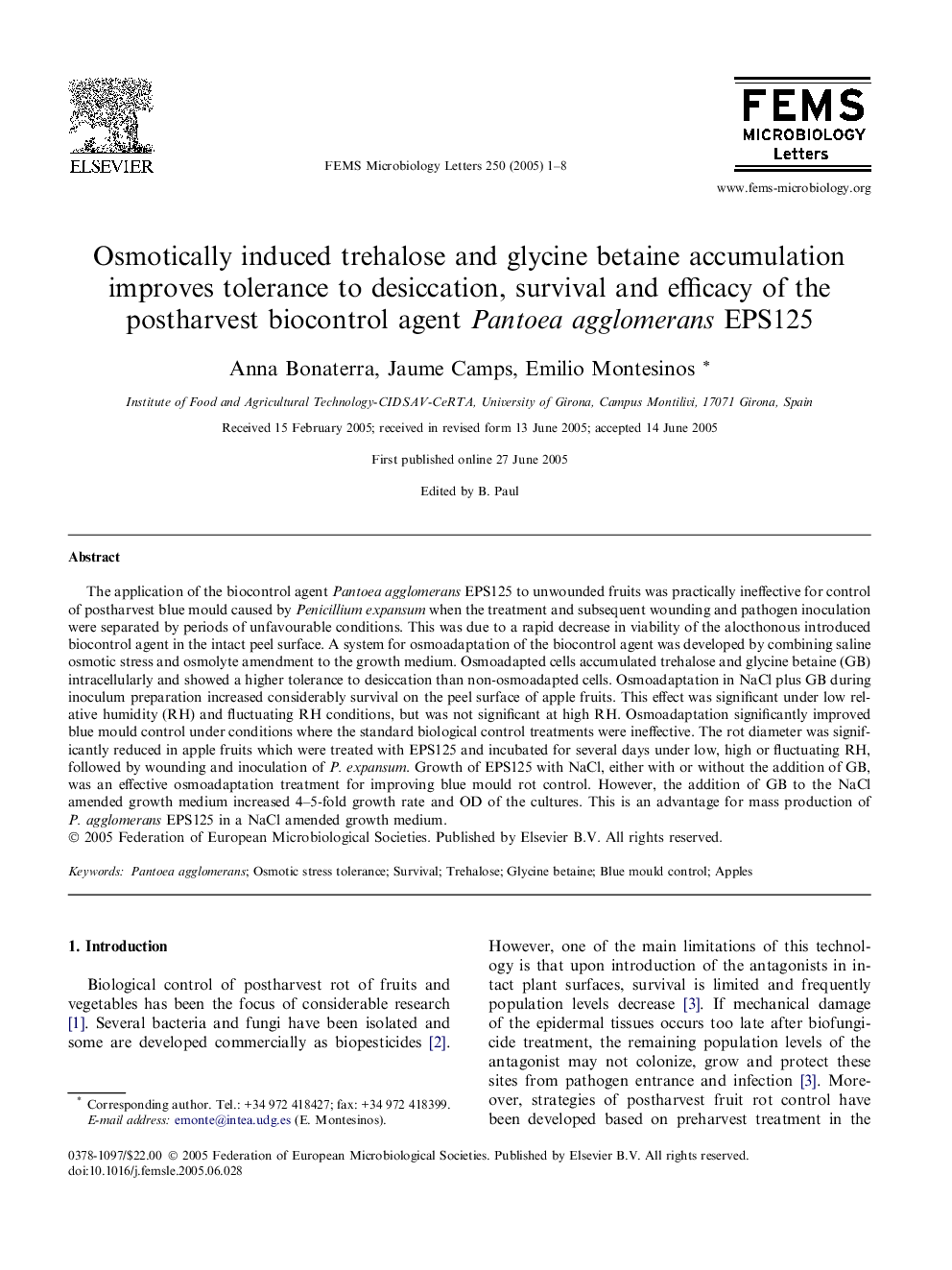| Article ID | Journal | Published Year | Pages | File Type |
|---|---|---|---|---|
| 9121468 | FEMS Microbiology Letters | 2005 | 8 Pages |
Abstract
The application of the biocontrol agent Pantoea agglomerans EPS125 to unwounded fruits was practically ineffective for control of postharvest blue mould caused by Penicillium expansum when the treatment and subsequent wounding and pathogen inoculation were separated by periods of unfavourable conditions. This was due to a rapid decrease in viability of the alocthonous introduced biocontrol agent in the intact peel surface. A system for osmoadaptation of the biocontrol agent was developed by combining saline osmotic stress and osmolyte amendment to the growth medium. Osmoadapted cells accumulated trehalose and glycine betaine (GB) intracellularly and showed a higher tolerance to desiccation than non-osmoadapted cells. Osmoadaptation in NaCl plus GB during inoculum preparation increased considerably survival on the peel surface of apple fruits. This effect was significant under low relative humidity (RH) and fluctuating RH conditions, but was not significant at high RH. Osmoadaptation significantly improved blue mould control under conditions where the standard biological control treatments were ineffective. The rot diameter was significantly reduced in apple fruits which were treated with EPS125 and incubated for several days under low, high or fluctuating RH, followed by wounding and inoculation of P. expansum. Growth of EPS125 with NaCl, either with or without the addition of GB, was an effective osmoadaptation treatment for improving blue mould rot control. However, the addition of GB to the NaCl amended growth medium increased 4-5-fold growth rate and OD of the cultures. This is an advantage for mass production of P. agglomerans EPS125 in a NaCl amended growth medium.
Related Topics
Life Sciences
Biochemistry, Genetics and Molecular Biology
Genetics
Authors
Anna Bonaterra, Jaume Camps, Emilio Montesinos,
